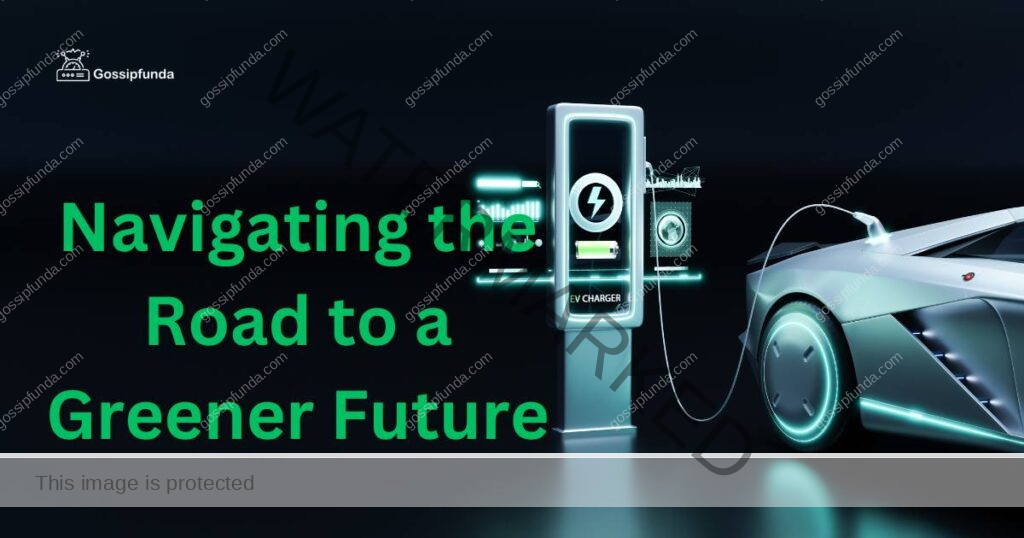Our world is at a crucial juncture. As we grapple with environmental degradation and the impacts of climate change, there’s an increasing focus on eco-friendly solutions across various sectors. The automotive industry is no exception. Over the years, we’ve seen significant advancements in car technology, leading to the rise of eco-friendly vehicles that not only decrease the carbon footprint but also offer a tantalizing glimpse into the future of transportation.

For those exploring greener options in the car market, there’s a myriad of choices available. Online Car Auctions – Damaged, Repairable, Used, Salvage Cars Sale – A Better Bid can offer a plethora of cars, including those that are sustainable. But, how do you differentiate between them? Let’s delve into the world of eco-friendly cars.
Understanding Eco-Friendly Cars
Eco-friendly cars, often termed “green” cars, are designed to emit low or zero greenhouse gasses. The goal is to reduce air pollution and reliance on fossil fuels. There are three categories:
Hybrids:
Combining a gasoline engine with an electric motor, hybrids can alternate between or simultaneously use both power sources.
Using both gasoline and electricity, hybrids can often drive in their electric mode over short distances, producing zero tailpipe emissions in this interval plus they use regenerative braking to capture and conserve energy they tend to deteriorate during braking to further improve their performance. As a result, hybrids use less fuel and produce fewer greenhouse gases compared to gasoline-powered vehicles for their frequent use, making it an environmentally friendly choice.
Electric Vehicles (EVs):
Powered entirely by electricity, they produce zero tailpipe emissions. Unlike traditional motors powered with the aid of gas or diesel, EVs do not emit carbon dioxide or other pollution that contributes to air pollutants and weather change. Furthermore, as the production of energy turns into more and more derived from renewable assets like wind, solar, and hydroelectric electricity, the environmental footprint of charging and going for walks on an EV continues to lower.
Thus, by way of disposing of the direct combustion of fossil fuels and selling cleaner energy sources, electric-powered motors play a pivotal function in reducing our universal environmental effect.
Alternative Fuel Vehicles:
These run on other fuels like hydrogen or biofuels instead of conventional gasoline or diesel. For example, automobiles powered by means of compressed natural gas (CNG) emit less harmful pollution, while hydrogen fuel cell automobiles emit the most effective water vapor as a byproduct. Additionally, biofuels, including biodiesel and ethanol, are derived from renewable sources like vegetation, making their production and consumption greater sustainable in the long run.
By diversifying our energy assets and reducing dependency on fossil fuels, opportunity gas automobiles contribute substantially to a cleaner and more sustainable transportation future.
Don’t miss: Apple Electric Car Project Task Titan Best by 2025
Benefits of Going Green
- Environmental Impact: The most obvious advantage is the reduction in emissions, which directly benefits air quality and contributes less to global warming.
- Economic Savings: With rising fuel prices and governments around the world offering incentives for green cars, the total cost of ownership can often be lower for eco-friendly cars.
- Health Benefits: A reduction in air pollution directly correlates with fewer health problems like asthma and other respiratory issues.
- Technological Innovation: Green cars are often at the cutting edge of technology, offering advancements like regenerative braking, advanced aerodynamics, and high-efficiency systems.
Potential downsides should also be considered by buyers. Eco-friendly automobiles, especially electric ones, can have far greater initial outlay expenses than their gasoline-powered equivalents. Additionally, the availability of charging stations for electric vehicles may vary greatly by area, which may cause “range anxiety”—the worry that you won’t have enough juice to get to a station in time—in certain drivers.
Due to the dual-engine arrangement, maintenance may be more difficult for individuals who are leaning toward hybrid automobiles. Finally, if the electricity utilized to charge the car comes from non-renewable, high-emission sources, the environmental benefit may be jeopardized. Therefore, before making a selection, prospective buyers must consider their daily commutes, the state of the neighborhood, and their entire budget.
Factors to Consider
Before diving into the eco-friendly car market, one should ponder over certain aspects:
- Charging Infrastructure: For EVs, accessibility to charging stations is vital.
- Range: Consider the distance the vehicle can travel on a full charge or tank. While many modern EVs boast impressive ranges, it’s essential to ensure they fit your regular driving patterns.
- Total Cost: While some green cars might have higher upfront costs, potential tax incentives, lower fueling costs, and maintenance savings can balance or even outweigh the initial investment.
Some of American states and towns have already made notable advancements in creating dependable infrastructure for environmentally friendly vehicles. With its extensive network of EV charging stations, generous incentives for EV buyers, and strict pollution regulations that promote environmentally friendly transportation, California stands out as a frontrunner. Cities like San Francisco, Los Angeles, and San Diego have worked hard to encourage EV adoption within the state of California, both in terms of infrastructure and regulatory support.
Beyond California, notable cities that have made significant investments in EV infrastructure include Portland (Oregon), Seattle (Washington), and Austin (Texas), demonstrating their dedication to environmentally friendly transportation. In addition to having a large number of charging stations, some places often offer incentives like preferred parking, access to carpool lanes, and tax discounts for drivers of environmentally friendly vehicles.
A Glimpse of the Future
The future for eco-friendly cars looks bright. We can anticipate:
- Greater Range: Battery technologies are advancing rapidly. This means EVs will soon travel much longer distances on a single charge.
- Autonomous Green Cars: Combining autonomous driving technology with eco-friendly vehicles will not only change the way we drive but could also lead to more efficient road systems, further reducing emissions.
- More Choices: As the demand for green cars grows, manufacturers are likely to introduce a wider variety of models, catering to various tastes and preferences.
Choosing to transition to an eco-friendly car is not just a personal choice; it’s a decision that positively impacts the community, the environment, and future generations. With the rapid advancements in technology and the increasing accessibility of green vehicles, there’s never been a better time to consider making the switch.
Whether you’re a car enthusiast eager to be at the forefront of automotive innovation or a concerned individual aiming to reduce your carbon footprint, eco-friendly cars offer an exciting and responsible solution. So, next time you’re exploring the car market, why not steer towards a greener path?
My self Jean Acker, an SEO specialist. MS from the reputed college MIT. I am an innovative person, as well as have a sound interface with tech. Honestly, I easily supervise my meditations as well as my experimentation with Android and iOS.


